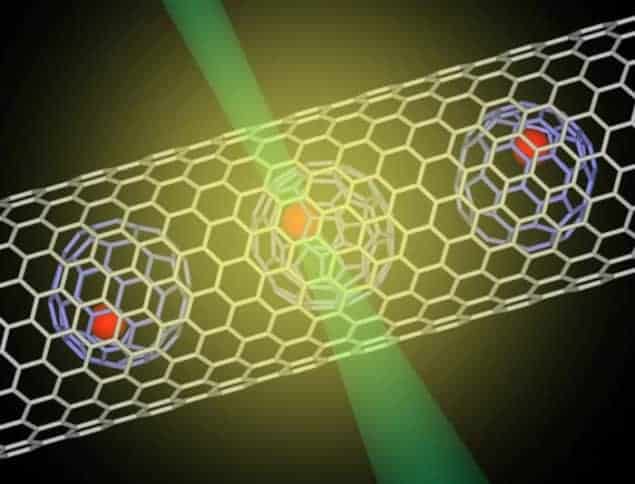
Researchers in Japan are the first to have succeeded in detecting single atoms using X-ray spectroscopy. Although a difficult technique, the work is an important step forward in studying and characterizing nanoscale structures and devices using X-rays.
Previous work in this field has largely focused on using electron energy-loss spectroscopy (EELS) to detect single lanthanide metal atoms and light atoms like carbon. However, EELS can only be applied to certain elements thanks to the high-energy beams used in this method that can damage samples. Nobel metals, such as gold and platinum, are also difficult to detect with high sensitivity using EELS – a major drawback when it comes to investigating meteorites, catalytic clusters or anticancer drugs, where only a very small number of noble metals are looked at in any given sample.
While energy-dispersive X-ray spectroscopy (EDX) is a good way to chemically characterize a wide range of materials, researchers have been reluctant to use the technique to detect single atoms because of the difficulties involved in obtaining good photoemission spectra. Kazu Suenaga of the Nanotube Research Center at AIST in Tsukuba and colleagues at JEOL Ltd in Akishima and Kyushu University in Fukuoka are now saying that they have successfully used EDX to sense single atoms of erbium thanks to advanced excitation and detection apparatus.
Metallofullerene peapods
Suenaga and colleagues studied metallofullerene peapods in their experiments and, in particular, erbium peapods (Er@C82) – so-called because the atoms are lined up in rows like peas in a pod. Each peapod is made up of a single erbium atom inside a carbon-82 cage, supported in a carbon nanotube. The advantage of looking at such a sample is that the structure is well ordered, with each metal atom separated from its neighbour by around 1 nm. The atoms can thus easily be distinguished in the resulting X-ray spectra.
The team obtained its results by using a finely focused electron beam (down to a few angstroms) to excite single Er atoms in an electron microscope so that they emitted X-ray photons. A newly developed large-sized (around 100 mm2) silicon drift detector was also employed to collect as many X-rays as possible from the sample.
“X-rays are typically emitted in all directions, so a normal-sized detector misses a lot of them and only a few per cent can be collected,” says Suenaga. “Our new large SSD greatly improves on collecting efficiency – by at least several times,” he told physicsworld.com.
“Being able to perform X-ray spectroscopy on single atoms in this way will be of great help in nano-optics research,” he adds.
The research is published in Nature Photonics.



